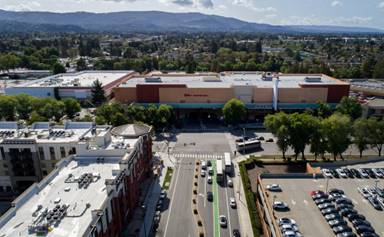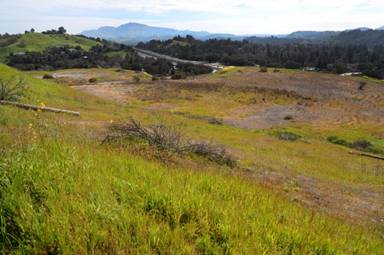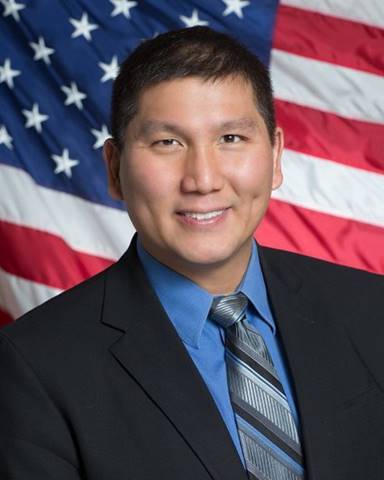|
| Sacramento made us do it: Cities blame lawmakers for unpopular housing decisions
'If the neighbors complain, you can blame those bastards in Sacramento’
By Katy Murphy | kmurphy@bayareanewsgroup.com | Bay Area News Group
April 15, 2018 at 6:30 am


Shopping Mall sign on the closed Vallco Mall in Cupertino, California, on Thursday, April 12, 2017. (LiPo Ching/Bay Area News Group)
Carefully, like a doctor explaining treatment options to a sick patient, a consultant for a tiny Peninsula city laid out a stark choice: Allow 2,000 homes to be built on a barren 684 acres or risk tangling with state lawmakers who have threatened to jam through a development twice as large.
“We talked to the council about everything between doing a full-throated fight with Sacramento to doing a very quick and dirty compromise, which is done in Sacramento all the time,” attorney Tom McMorrow told the small group of residents at a recent Brisbane City Council meeting, assuring them that a full environmental clean-up of the contaminated Baylands site was part of the deal.
In the Capitol, he said, “Issues don’t just go away because you’ve defeated them once. The way you get them to go away is responsible compromise.”

A huge redevelopment proposal, the Brisbane Baylands, would develop the 684-acre property in in northern San Mateo County west of Highway 101. Karl Mondon/Bay Area News Group
Brisbane — which to outsiders has become emblematic of development gridlock and NIMBYism — is one of many cities grappling with Sacramento’s forceful response to California’s housing crisis. As renters, would-be buyers and employers reel from runaway prices, powerful lawmakers are aiming to boost the supply of homes, one reluctant city at a time.
And in January, fresh from celebrating the signing of last year’s landmark housing bills, lawmakers returned to the Capitol with more ideas. At least 200 housing bills have been introduced this year alone, according to the League of California Cities — many of them directed squarely at local governments. In the weeks and months ahead, lawmakers will debate proposals to force cities to allow five-story apartment buildings near transportation stops; to OK development on BART station parking lots; to more aggressively plan for needed low-income housing; to stop collecting local fees for new granny units; to ease parking requirements; and to speed approvals of long-term apartments for the homeless.
At least one city, anticipating a local backlash, has already mounted a public relations effort to clarify who is responsible for changing the rules.

A proposed housing development site along Deer Hill Road has been a flashpoint in the East Bay suburb of Lafayette. (Aric Crabb/Bay Area News Group
Lafayette, an upscale East Bay suburb that also has been a flashpoint for housing development, will be expanding its social media presence and holding meetings to explain how the legislation could affect the city, said Steven Falk, a longtime city manager.
“As projects come down the line that may be denser and encroach upon single-family neighborhoods in a way that people aren’t comfortable with,” Falk said, “I know my public officials want to have the residents know very clearly that it is the doing of the state and not the city.”
But some lawmakers and pro-development activists argue that the weakening of local control could actually be a political gift to local elected officials.
“If the neighbors complain, you can blame those bastards in Sacramento and say, ‘my hands are tied,’ ” said Brian Hanlon, a lobbyist for the pro-housing development coalition California YIMBY, which is sponsoring SB 827, at a recent briefing for legislative staffers.
State Sen. Jerry Hill, a San Mateo Democrat who helped broker a deal with Brisbane officials to allow housing on the Baylands site — pending voter approval — has heard similar sentiments.
“It has, I’ve been told, relieved local elected officials from the pressure of local constituencies by placing the blame on Sacramento for things they feel are necessary but would have a difficult time doing on their own,” he said in an interview. “That, I have heard from some council members in my district.”
Developers already have used one new law, Senate Bill 35, to fast-track stalled developments of affordable and market-rate housing in Berkeley, San Francisco and at the dead Vallco mall in Cupertino.
Still, some worry that in the rush to build more homes, the state is giving too much authority to developers and concocting policies out of step with local needs and concerns — in the case of Brisbane, pushing development on a former landfill and rail yard without a full understanding of the health risks. One woman speaking at the Brisbane council meeting, who had come from a town hall meeting with Hill, said the erosion of local control will not go over well in California.
“If you think there are people who are happy with the loss of local rule, you should have been at (Hill’s) offices today,” she said, “because there is a large number of people who will come out against losing local rule.”
New research from Boston University professors suggests that this cherished form of direct democracy can actually perpetuate inequality. The researchers analyzed public comments at council and planning commission meetings in 97 Massachusetts cities and towns. By matching the speakers to the state’s voter file, they found that the participants were more likely to be older, male, and homeowners — and that the speakers came out overwhelmingly against new housing development, even when public opinion statewide favored the construction of needed homes.
“When we consider these projects on an individual basis,” Boston University Assistant Professor Katherine Levine Einstein said, “we’re going to motivate opponents to show up much more than proponents because opponents are the ones who stand to lose something.”
Oakland resident Pamela Drake, who is active in Democratic politics, said she wants to see more housing density and less sprawl in California — changes she doubts can be made, city by city, because of overwhelming opposition to change. She is watching some of the bills closely and helped organize a forum on SB 827. But she also is worried the state is approaching the problem backwards, moving to add development without properly investing in affordable housing subsidies or public transportation.
“Until we have a governor who says we have to put money into this,” she said, “it’s a whole bunch of bandages on a gaping wound.”

Cupertino Mayor Darcy Paul (Courtesy City of Cupertino)
Cupertino Mayor Darcy Paul, who was roundly criticized for his recent assertion that the housing and jobs imbalance in his city — home to a new Apple campus — was “not dire,” said he doubts laws to spur new housing will solve the affordability problem.
“If we’re truly looking at a shortage of housing and housing that’s much too expensive,” he said in an interview, “we can’t suddenly say we’re going to create a whole bunch of housing that’s not expensive, because that’s not how the market works.”
Some leaders, such as Richmond Mayor Tom Butt, say their cities don’t fit into the NIMBY narrative. In Richmond, where rents are lower than other Bay Area cities but the cost of construction is just as high, he said, housing development is a tough sell.
“Clearly in some places NIMBYism has been an impediment to getting housing built,” he said. “In my city, it’s different. We’re actually looking for people to come to Richmond to build. Come to Richmond, we’re open for business.”
Sacramento housing bills
Five key proposals to get cities to boost housing supply:
More apartments: Senate Bill 827, from Sen. Scott Wiener, D-San Francisco, would require cities to allow apartment buildings that are four to five stories high within a half mile from all rail stations as well as bus stops with high-frequency service. The height was lowered from the original bill, and the updated proposal now includes a low-income housing requirement.
More teeth: Senate Bill 828, Wiener: Would overhaul a major California law — little-known to the general public — that guides planning for housing needs, adding new requirements and penalties for falling short. (Wondering about this Reena person that planning types are always talking about? They’re probably complaining about RHNA, the Regional Housing Needs Allocation.)
Homeless housing: Assembly Bill 2162, from Assemblyman David Chiu, D-San Francisco, would fast-track approvals of housing that is entirely below-market rate with at least 35 percent of the units set aside for the homeless.
BART living: Assembly Bill 2923, from Chiu, gives Bay Area cities two years to update their zoning to allow for housing on BART property (mostly, parking lots) or risk ceding control over projects to the transit agency.
Granny units: Senate Bill 831, Sen. Bob Wieckowski, D-Fremont, would make it illegal to charge any connection or impact fees to homeowners adding a granny unit — or to require off-street parking when a garage is converted into living space. |

